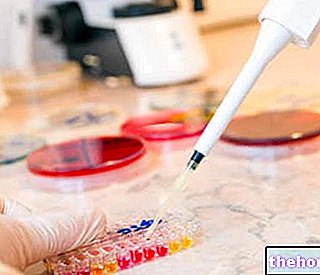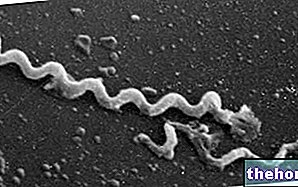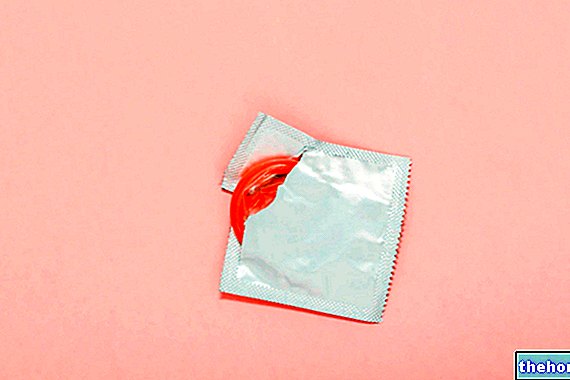Solitary painless ulcers
There syphilis primary is the most frequent cause. It is a sexually transmitted disease caused by a bacterium called Treponema Pallidum. L "ulcer of the lue (syphilis), called syphiloma, is formed on the crown of the glans or on the inner portion of the foreskin (sometimes on the shaft of the penis or on the scrotum). Syphiloma begins as a papule that gradually erodes to form a "superficial ulcer with the presence of a serous secretion containing numerous bacterial elements (called spirochetes because they have a spiral shape). Since spirochetes penetrate through intact skin, lesions should always be touched with gloves. The ulcer is not painful, mostly it is a single, round or oval, with smooth and slightly raised edges; a hardened edge surrounds the lesion; in this way, it can be easily raised between thumb and forefinger like a small disc. There is no death of skin tissue (necrosis), nor pus. The skin lesion is associated with an increase in the volume of the inguinal lymph nodes, which are hard but not painful. There are generally no other symptoms.
Other causes of non-painful solitary ulcers are found in the tertiary syphilis (and they are called tires), in the tumors (carcinomas), in balanitis (dermatitis involving the penis and which can be caused by many different infectious and non-infectious causes, including Reiter's syndrome), in venereal lymphogranuloma, and in the Donovanosis.
An ulcerated tumor may resemble an ulcer, but the lesion is painless and - unlike the non-tumor ulcer - the neoplastic ulcer is surrounded by a hard and irregular border.
Venereal lymphogranuloma is a sexually transmitted disease caused by a bacterium called Chlamydia Trachomatis. The initial lesion consists of a tiny "erosion of the penis, which the patient often does not even notice because it is painless and fleeting. It is not uncommon for the skin lesion to no longer be visible at the time of the medical examination; the inguinal lymph nodes, on the other hand, become swollen, painful, and tend to form communications (fistulas) with the overlying skin. The fistulas are small, multiple, and secrete a creamy pus or serous fluid with blood. Spontaneous healing is very slow and skin fibrosis may remain. A late complication can also be scarring of the rectum caused by fibrosis, with retention of stool.
Donovanosis is a sexually transmitted disease, also called granuloma inguinale, and is caused by a bacterium (Calymmatobacterium Granulomatis). It is a very rare cause of genital ulcer; in fact, it is mainly present in tropical countries and is rare in Europe. Determines one or more flesh-colored, pus-free, painless ulcers, usually without affecting the lymph nodes. They can simulate a "tumor ulcer, and the diagnosis requires the identification of the infecting bacterium" inside the immune cells (macrophages) that rush to the site of the same ulcer (Donovan's bodies).
Sore solitary ulcers
Very rare, they must lead to the suspicion of an injury from tuberculosis or tumor.
Differential diagnosis
Of the 5 sexually transmitted diseases (gonorrhea, syphilis, chancroid, inguinal granuloma and venereal lymphogranuloma) all, with the exception of gonorrhea, can cause a "genital ulceration."
Genital herpes and syphilis are the most common causes in Western countries: the diagnostic suspicion must be confirmed with the culture of the virus and with the identification of the Treponema Pallidum from serum samples obtained from the ulcer.
Differential diagnosis of ulcerative lesions of the genitals
without erythema
Myalgia
necrotic center with pus on the bottom;
painful
painful
not sore
not painful
hardened edge;
not sore
hard;
not painful
not painful

Differences between the main ulcerations of the genitals
- Genital herpes: small, grouped, superficial, secreting ulcers. There is no necrosis.
- Luetic ulcer (syphilis): round or oval, with smooth margins and hardened edge. Absence of necrosis.
- Soft ulcer (chancroid): with irregular but not hardened margins; necrotic center.
- Ulcerated carcinoma: similar to the previous one, but the ulcer is surrounded by a hard and irregular border.
Other articles on "Ulcers on the Penis"
- Genital Injuries and Ulcers
- Non-cancerous productive genital lesions




























